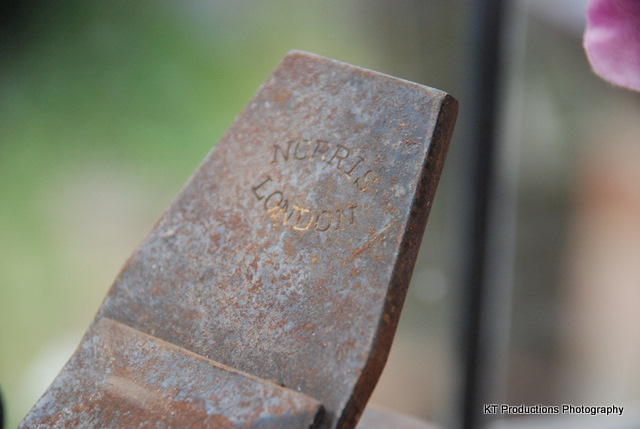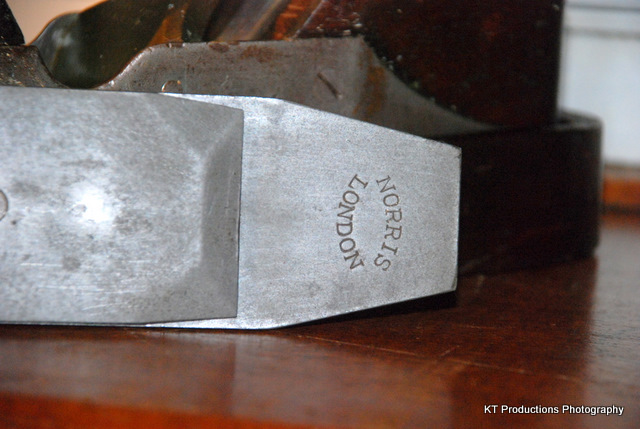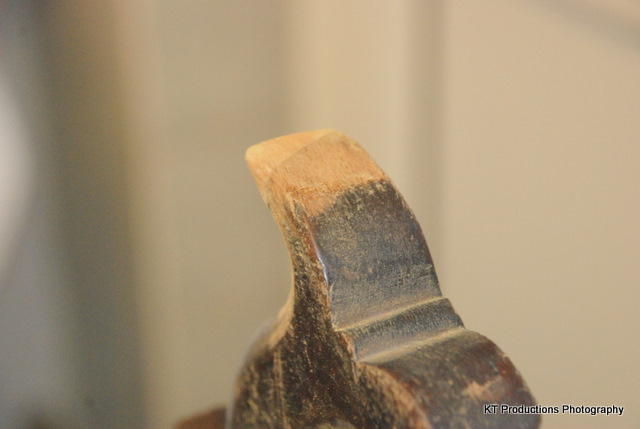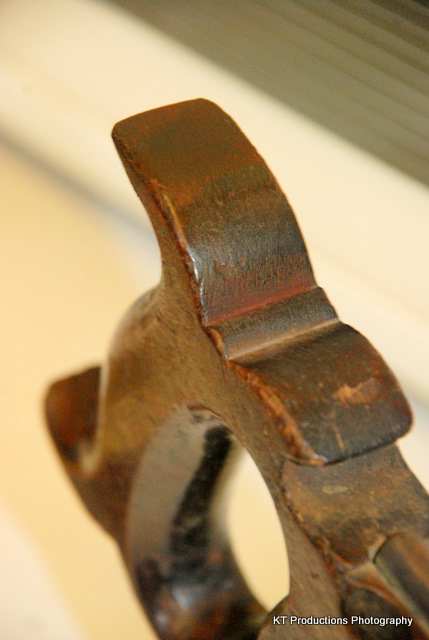Well here it is back after taking most of the thoughts and advice into account many, many weeks later....so thank you everyone. I would have been hard put to do it alone.
[/img]
Answers first....
AndyT- Thanks on instructions re. pics. We will see if I can do it or not!
RichardT- Rivets were not easy to find but did see some when rubbing up the sides. The dia for the lever was 5.27mm or between a 13/64 in. and 7/32 in. Hence a drill size of No. 4. I say drill size if it is a pre 1960ish product. I drilled out with a 5mm drill. The new dowel was 3/16in. because I had it. and it fitted. It gave a little play which I wanted. The cap was very tight and so I was happy to see it eased off a little one way or another. Steel sizes I suspect would vary between roller companies then, not standardised quite so much.
Peter Maddox – Used citric acid to clean iron and cap iron. Left them in the solution for about 11/2 – 2 days and they came up OK. Acid was quite cheap from local wine making shop.
AndyT - I left the wood in place; it would have been a big mistake to do otherwise. The wood was quite weathered and grey in places so took a bit of rubbing down. (sat in front of a broken hut window for years). Used Vandyke crystals to build up colour...3 coats I think it was. Yes, I used Tru-oil from a local gun shop. Quite liked it and it dried quickly...within an hour or so, so not waiting days between coats. I did about 6 or 7. It dried like a sponge into end grain as you looked at it. I left most of the cracks, but filled one in the handle which could have been a pest in use, with Beech dust and glue and it stained OK. I like the end grain best.
Jimi43- Found out as I cleaned it up.... it is not dovetailed. Cheeks riveted to the sole which has a heavy plate single riveted onto .. acc. Hard to see the rivets on the sole infill pale .. Only one big rivet. It was easier to see the straight line of the sole running along the cheeks.
RichardT – Adjuster was locked solid and was going to be a devil to move, so I bored out the eddowels to the Cap to get at the screws. Once off I dunked in citric acid for a couple of days and came out remarkably clean. I think the steel may have been an alloy. It was tight due to rust of the iron above it and so blocked up with Ferruginous deposits!
AndyT – Looked up your link to Tony M. site and most useful. I went to his shop many years ago....didn’t buy anything. The adjuster plate had two steel screws (I later tried Brass but of course it was too soft to pull the plate in tight and I reverted to steel; a modern No4 I think it was.). I recently saw a Norris with a 4 screw plate. The lower screw was OK to turn out but the uppermost one was bad. The rust was down the length of the screw so I had to drill it out and glue a beech plug before refixing.
The following shots show how it turned out. I am happy as I intend to use it. The iron had been nicely ground to 20 degs. I rubbed up the back and clean up bits and pieces. The cap iron wasn’t too good but in its original state I suspect. So a bit of rubbing it up. I sharpen to about 30 degas but it isn’t too good. I will have to dress up the back a bit more to remove all tiny rust holes I didn’t see then it should be OK. I rubbed up the sole and wonder if I will need to open up the neck a bit. I am not sure if I should restore to 20 degs. Never knew what I should do with my No220 Stanley block plane. I think it is aged post-war perhaps late 40’s or early 50’s. Would have cost an arm and a leg then, so very much a gentleman’s plane...... well for the rich anyway. At least several weeks wages. The war years must have all but killed off that sort of thing. The handle is right handed. I know it sounds like a left-handed tea cup but the handle horn has just a slight bias to the right. Don’t think it has been altered since made. Makes holding a bit easier than usual. Worth doing the same to other saws, etc. I used Hammerite rust remover Gel for inside the mouth when it was difficult to get into. I quite liked it. By mistake I left the gel to dry and found it was better to scrape off with a blunt screwdriver. Did it over several days. This way I managed to get around the button spacers. The original rivets were not so much peined over but simply pressed into shape. Perhaps by a hydraulic press, as seen bit the ring mark on one. I almost over countersunk my holes. They only need to stop falling out... no side loads.
Where there you are. Hope I did it OK. Happy for comments.......good or bad. I had to remember I was doing it use it. not to put it in a case so it will get rubbed etc in use. A big thank you to all who helped and best wishes to you all. It’s taken ages to type this! More Picas to follow !!

















































